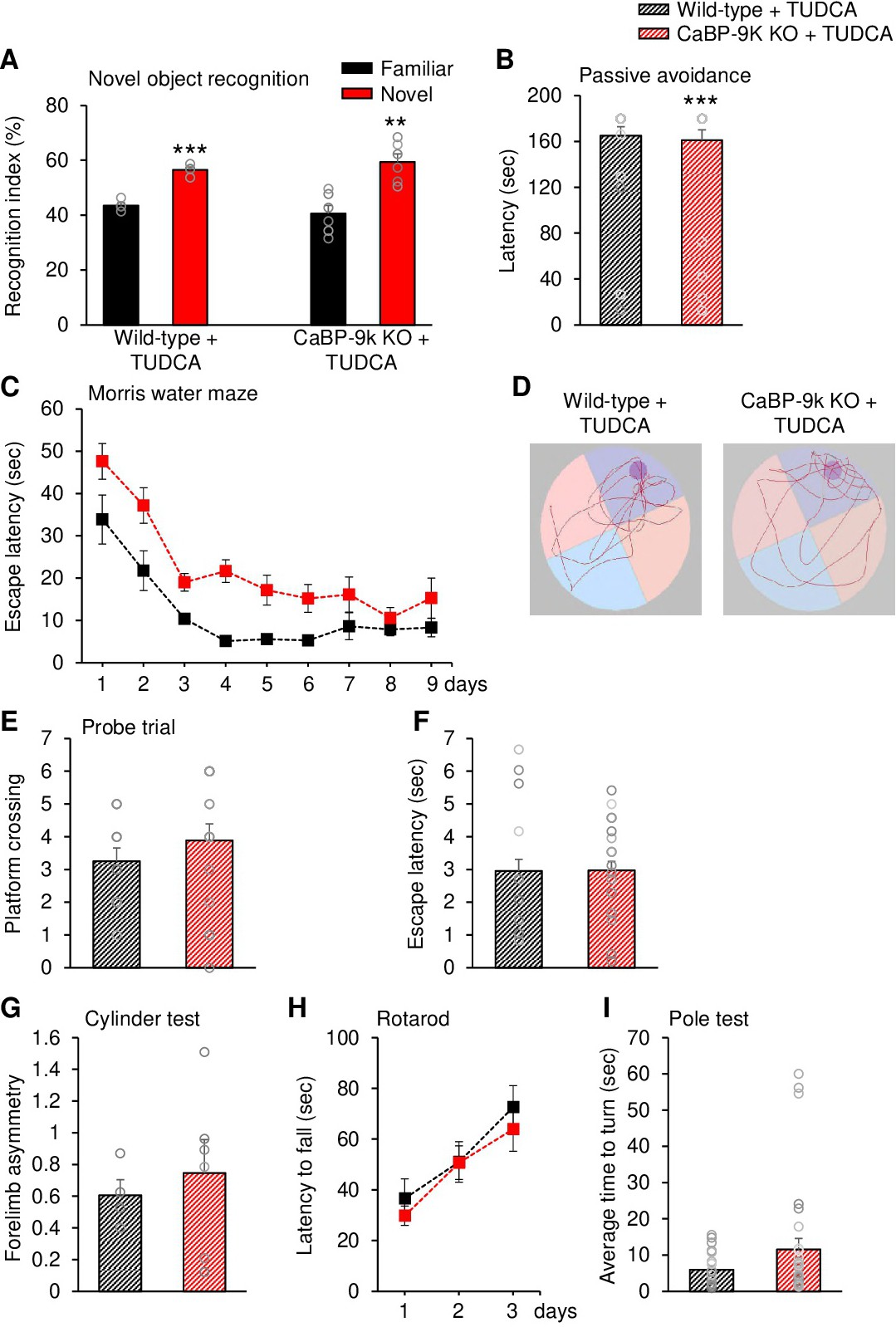Fig. 7. ER stress inhibitor rescues memory and motor behaviors in CaBP-9k KO mice. (A) Old TUDCA-treated wild-type and CaBP-9k KO mice were assessed in the novel object recognition test. (B) TUDCA-treated mice were assessed in the passive avoidance test. (C) In the Morris water maze test, escape latencies after 6 days of training were similar among TUDCA-treated mice. (D) Representative swim paths of TUDCA-treated wild-type and CaBP-9k KO mice during a probe trial after training. (E,F) Quantification of D. CaBP-9k KO mice treated with TUDCA showed no differences the platform crossing times or escape latency in probe trial. (G-I) Assessment of motor behaviors in the cylinder, rotarod, and pole tests. n = 4 for TUDCA-treated wild-type mice; n = 6 for TUDCA-treated CaBP-9k KO mice. Data shown are the means ± SEMs and were analysed by two-tailed unpaired Student's t-tests.
